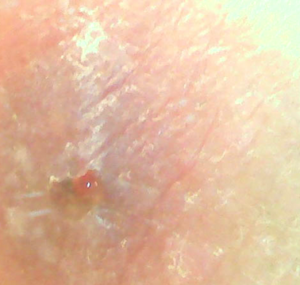Wolf spiders are also referred to as hunting spiders. They are about half an inch to two inches in length. They are typically gray or brown with various stripes and marks on their back. Those markings are often called the ‘Union Jack’ impressions. Unlike web spiders, the wolf spiders don’t spin webs. The wolf spiders are hairy and mostly feed on insects. In the fall, as it gets colder, they move to warmer places. It is for this reason that they tend to move in houses in the evening as they seek warmth.
Wolf spiders are very fast in motion, which makes them survive in the same environment with their enemies. They are found in various places among them being households mainly during the winter season. They prefer habitats like gardens, meadows, prairies, and forests. The wolf spider has an arrangement of eight eyes. Four small eyes are in the bottom row, followed by two larger eyes in the middle row, and at the top row, there are two medium eyes. From the look of these spiders, they appear scaring something that makes people think their bites are highly painful and dangerous. While people should be wary of these spiders, their bites may not be as serious as it is thought or imagined.
Wolf Spider Bite – Stages and Symptoms
These spiders are very aggressive when hunting prey; they do not bite unless provoked. When threatened, it will first try to retreat, then it defends itself. It rears up on its legs, exposing its fangs. If you provoke wolf spiders, they are likely to bite you and inject venom in your body. In humans, a bite by wolf spider is considered nonlethal and may be so painful. Its venom presents no grave danger.
If bitten, the wound can become swollen and red. The skin around the bite can turn black and lymph glands may swell. One experiences pain after the bite, which may last for about ten days. The pain stage is accompanied by itching, which contributes to the formation of blisters. These blisters will usually rupture with time leading to the formation of ulcers.
If proper medical attention is not sought, the ulcers can progressively get worse thus leading to vomiting, interference with the formation of blood cells, chills, hemolytic fever, and in extreme situations, they can lead to death.
Treatment and first aid
If a wolf spider bites a person, it is not advisable to bandage the wound but an ice pack should be put on the area to help relieve the swelling. The victim should avoid movements whenever possible. When bitten, a first aid can be provided. A patient should elevate legs or arms to minimize the swelling. Use of an antibiotic cream or mild soap and water to wash the area is recommended. You can apply a cold cloth to the bitten area. You can also put an ice pack on the bite.
An individual can take acetaminophen to minimize the pain. Alternatively, aspirin can also play a great role in easing the swelling. Antihistamines, if available, can be used to reduce both swelling and itching. If signs and symptoms keep worsening it is important for the victim to seek medical attention.
Prevention of wolf spider bites
To prevent bites by wolf spiders, you may want to create an environment that does not encourage the spiders to reside in. Remove any food crumbs by sweeping baseboards and corners of rooms every day. When spiders are not in the webs, remove them.
People should learn to sweep and clean their houses often. It is also important that one rearranges their house more often, especially the furniture. This will ensure that spiders don’t spin webs in the house. Keep clothing, blankets, and shoes off the floor so that spiders do not hide in them during day times.
If you notice a spider in your house, drive it away carefully by use of a soft brush. Live spiders can also be trapped using glass jars and stiff papers and disposed of in outdoors. If one sees the spiders in their house, they can kill them using a fly swatter or a magazine.
It is advisable to use yellow bulbs for lighting since they do not attract a lot of insects like other bulbs. Yellow lighting bulbs will help prevent spiders from inhabiting the house. If you have furniture outside, check often if there are any spiders under the rim of the seats. Ensure that the shed is clean, doors are constantly weather stripped and closed tightly.
Many people believe that wolf spiders are out to bite them. This notion about spiders is not true because they generally will bite if threatened or handled.
These insects are generally timid and prefer to hide in areas where human beings frequent less. When you are bitten, the only sure way to receive proper treatment is to capture the spider and bring it with you for identification when seeking medical attention.


